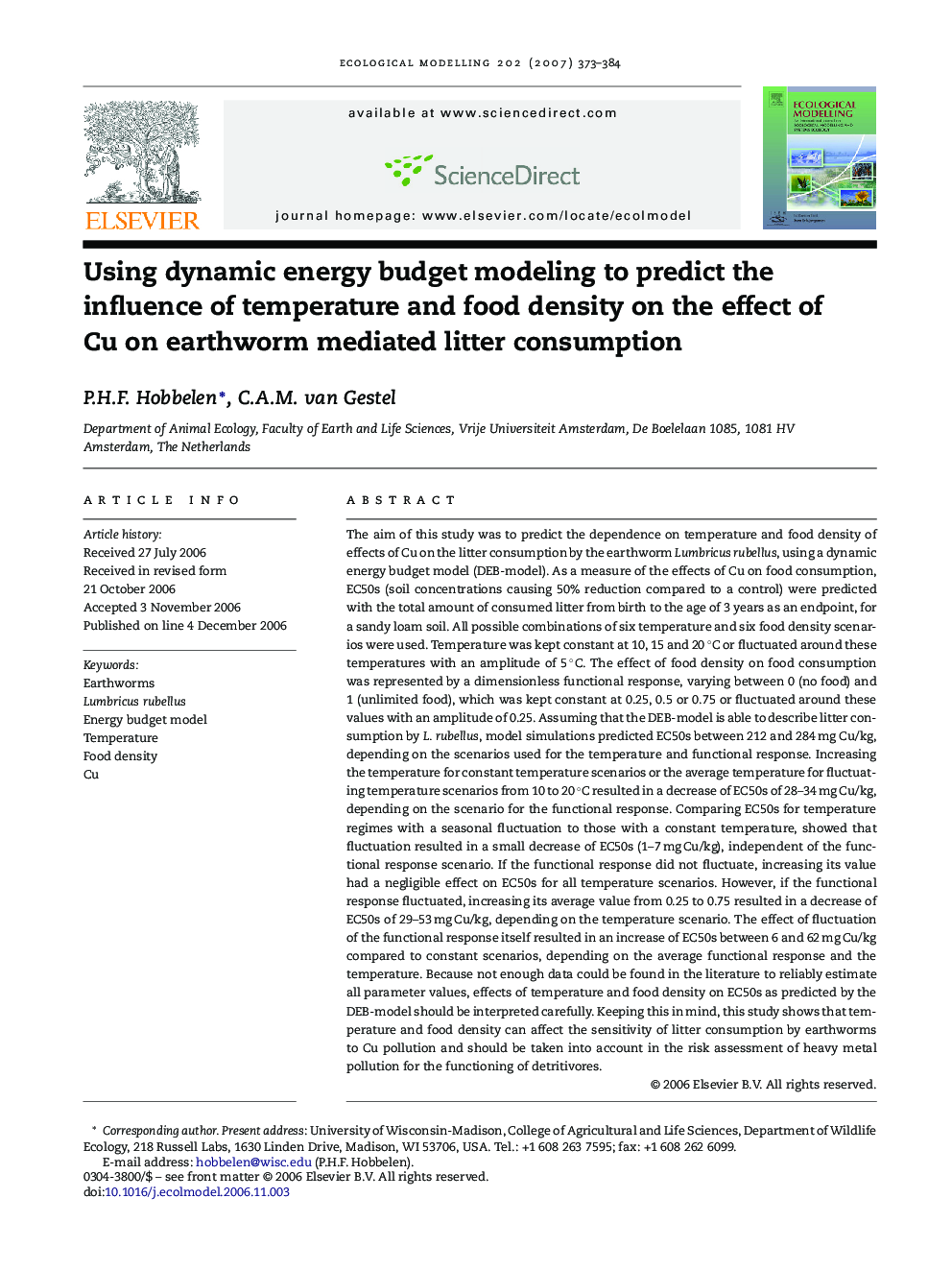| کد مقاله | کد نشریه | سال انتشار | مقاله انگلیسی | نسخه تمام متن |
|---|---|---|---|---|
| 4378668 | 1617552 | 2007 | 12 صفحه PDF | دانلود رایگان |

The aim of this study was to predict the dependence on temperature and food density of effects of Cu on the litter consumption by the earthworm Lumbricus rubellus, using a dynamic energy budget model (DEB-model). As a measure of the effects of Cu on food consumption, EC50s (soil concentrations causing 50% reduction compared to a control) were predicted with the total amount of consumed litter from birth to the age of 3 years as an endpoint, for a sandy loam soil. All possible combinations of six temperature and six food density scenarios were used. Temperature was kept constant at 10, 15 and 20 °C or fluctuated around these temperatures with an amplitude of 5 °C. The effect of food density on food consumption was represented by a dimensionless functional response, varying between 0 (no food) and 1 (unlimited food), which was kept constant at 0.25, 0.5 or 0.75 or fluctuated around these values with an amplitude of 0.25. Assuming that the DEB-model is able to describe litter consumption by L. rubellus, model simulations predicted EC50s between 212 and 284 mg Cu/kg, depending on the scenarios used for the temperature and functional response. Increasing the temperature for constant temperature scenarios or the average temperature for fluctuating temperature scenarios from 10 to 20 °C resulted in a decrease of EC50s of 28–34 mg Cu/kg, depending on the scenario for the functional response. Comparing EC50s for temperature regimes with a seasonal fluctuation to those with a constant temperature, showed that fluctuation resulted in a small decrease of EC50s (1–7 mg Cu/kg), independent of the functional response scenario. If the functional response did not fluctuate, increasing its value had a negligible effect on EC50s for all temperature scenarios. However, if the functional response fluctuated, increasing its average value from 0.25 to 0.75 resulted in a decrease of EC50s of 29–53 mg Cu/kg, depending on the temperature scenario. The effect of fluctuation of the functional response itself resulted in an increase of EC50s between 6 and 62 mg Cu/kg compared to constant scenarios, depending on the average functional response and the temperature. Because not enough data could be found in the literature to reliably estimate all parameter values, effects of temperature and food density on EC50s as predicted by the DEB-model should be interpreted carefully. Keeping this in mind, this study shows that temperature and food density can affect the sensitivity of litter consumption by earthworms to Cu pollution and should be taken into account in the risk assessment of heavy metal pollution for the functioning of detritivores.
Journal: Ecological Modelling - Volume 202, Issues 3–4, 10 April 2007, Pages 373–384